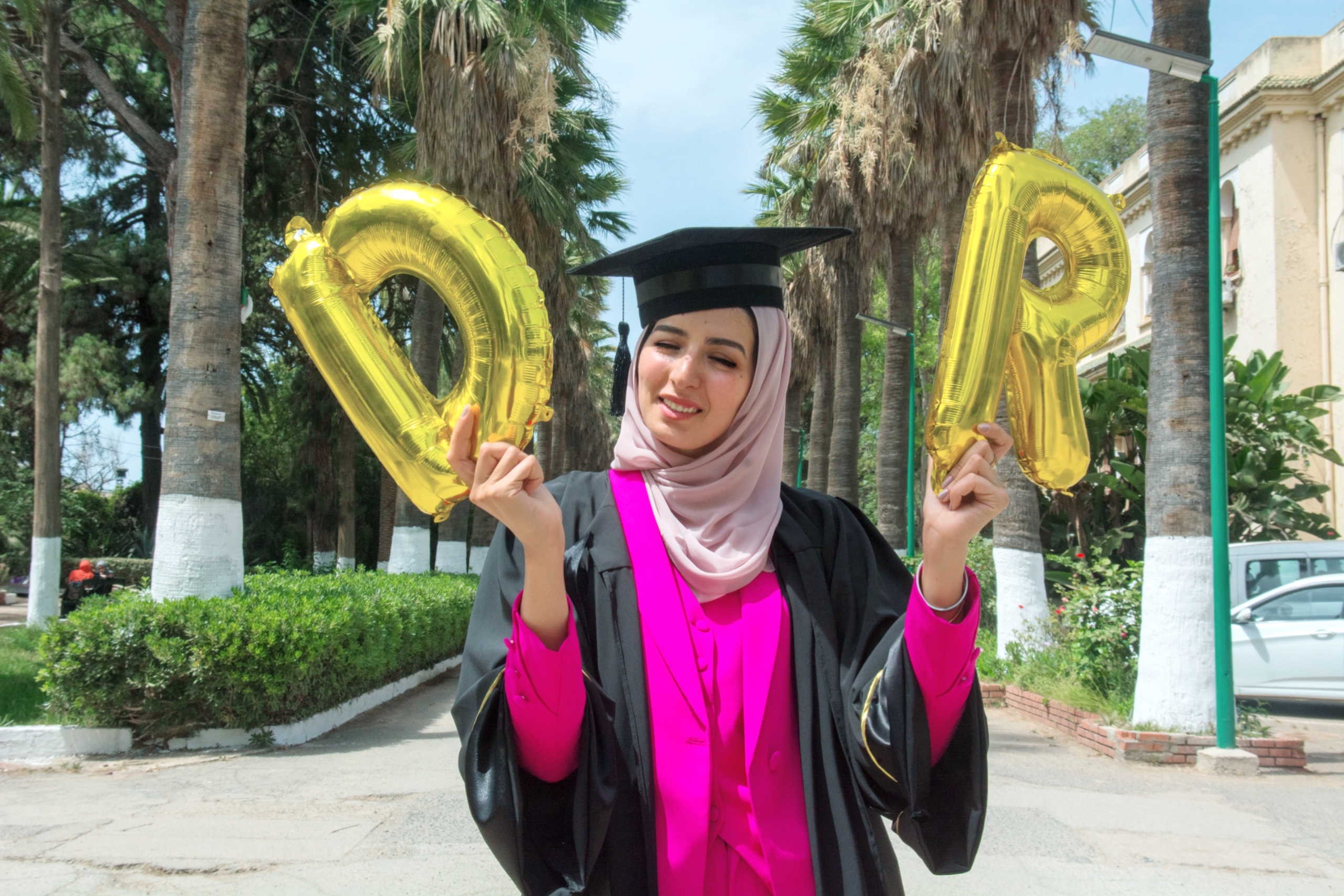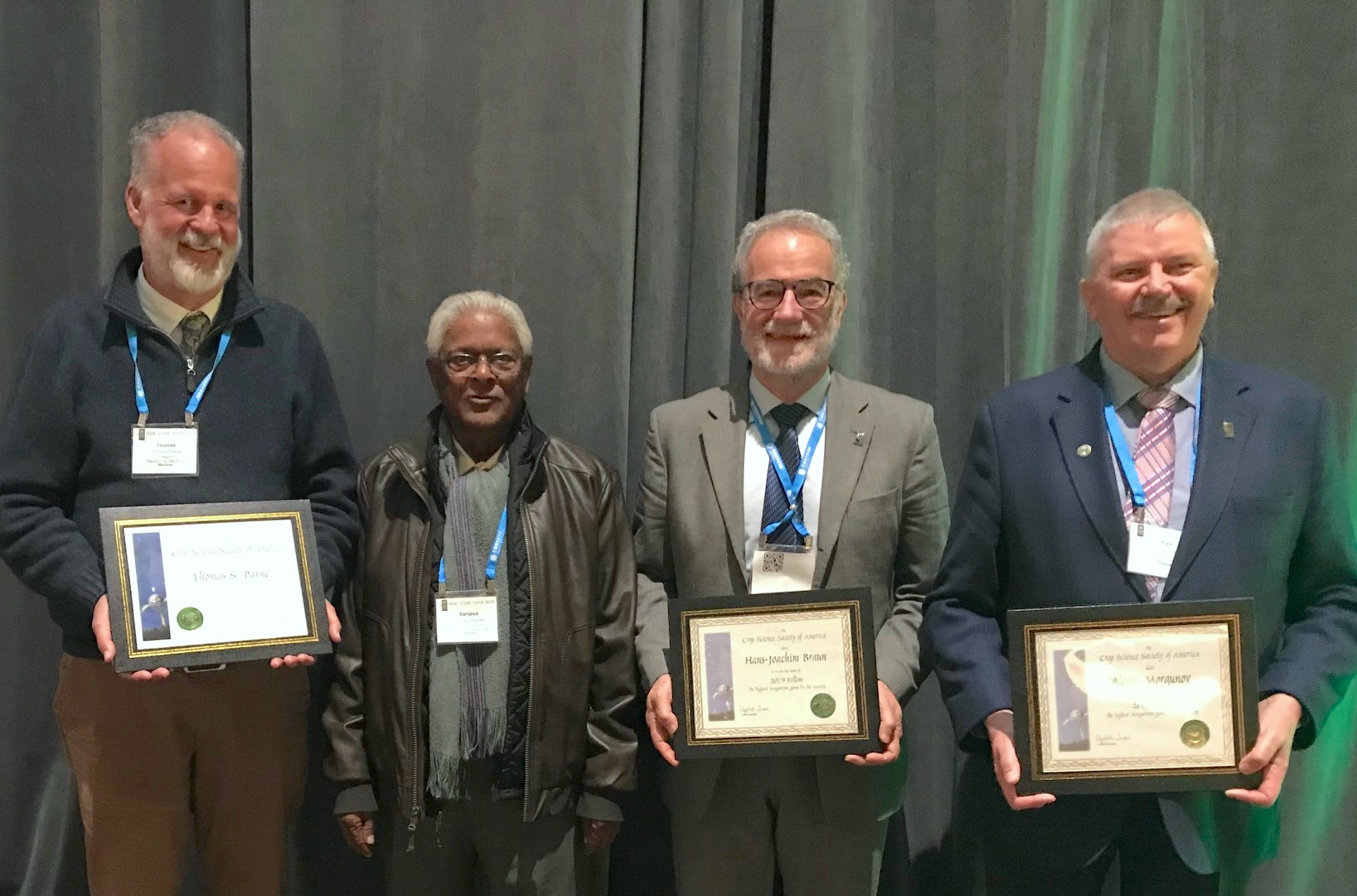Two new students have graduated from the International Maize and Wheat Improvement Center’s (CIMMYT’s) Soil-Borne Pathogens program. The two new graduates, Khawla Mehalaine and Salah-Eddine Laasli, were supervised by CIMMYT senior scientist Abdelfattah Dababat.
He leads the Soil-Borne Pathogens program, which focuses on identifying the main soil-borne pathogens associated with cereals and developing an integrated pest management approach to combat them. The research team is particularly interested in finding novel sources of resistance against these pathogens.
Over the last two decades, CIMMYT scientists leading the Soil-Borne Pathogens program have trained tens of students which constitute the next generation of top researchers on this topic. Through this program, CIMMYT has also organized workshops and courses in North Africa, including a symposium on cereal nematodes held in Agadir, Morocco, in 2017.
Since soil-borne pathogens are exacerbated by water stress conditions, researchers have identified the Central and West Asia and North Africa regions as priority areas, due to their vulnerability to drought.
On March 1, 2021, Syngenta, in collaboration with CIMMYT and other partners, led the first One Earth Soil and Root Health Forum, an event which examined the importance of root and soil health to food security, climate resilience and livelihoods. The event also created a community for action on root and soil health.

Nematodes in Algeria
Mehalaine holds an engineering degree in agronomy and a master’s degree in plant protection from the Higher National School of Agronomy (ENSA) in Algeria. She successfully defended her PhD dissertation “Studies of cereal cyst nematodes of the genus Heterodera in the regions of northern Algeria” in June 2021, graduating from ENSA with honors.
She studied the behavior of four durum wheat varieties against cereal cyst nematodes through field surveys, molecular identification at species levels, and by evaluating the yield components of these wheat varieties.
She was promoted by ENSA professor Hammach M. and supervised by Dababat from CIMMYT, and professors Mustafa Imren and Göksel Özer from Abant Izzet Baysal University in Turkey.
“Completing my doctorate was a truly enriching experience and a challenging but rewarding journey,” Mehalaine said. “It was a collective effort and I am extremely grateful to Dr Abdelfattah Dababat for sharing his scientific skills, for his patience and support, and for all the opportunities I was given to further my research. Thanks to him, I got to know the world of nematodes. Special thanks to CIMMYT for funding the molecular study part.”

Root-lesion nematode and crown rot fungi
Laasli graduated with an International Master of Agronomic and Environmental Nematology (IMANEMA) from Ghent University, in collaboration with CIMMYT, the National Institute of Agricultural Research in Morocco and the Faculty of Agriculture at Abant Izzet Baysal University in Turkey.
His master thesis, entitled “Interaction of Root-Lesion Nematode (Pratylenchus thornei) and Crown Rot fungi (Fusarium culmorum) associated with wheat resistance under simulated field conditions,” was promoted by Wim Bert, a professor at the University of Ghent, and Dababat. The project was also supervised by Imren and Özer.
Laasli evaluated the host status of 150 spring wheat lines to both P. thornei and F. culmorum, and estimated the damage caused by the disease complex involving both pathogens at different infection scenarios. He found several lines that possessed multiple resistance to both diseases tested — which could be powerful sources of resistance for breeding program worldwide.
Cover photo: Irrigated wheat field. (Photo: S. Sukumaran/CIMMYT)
 Climate adaptation and mitigation
Climate adaptation and mitigation 